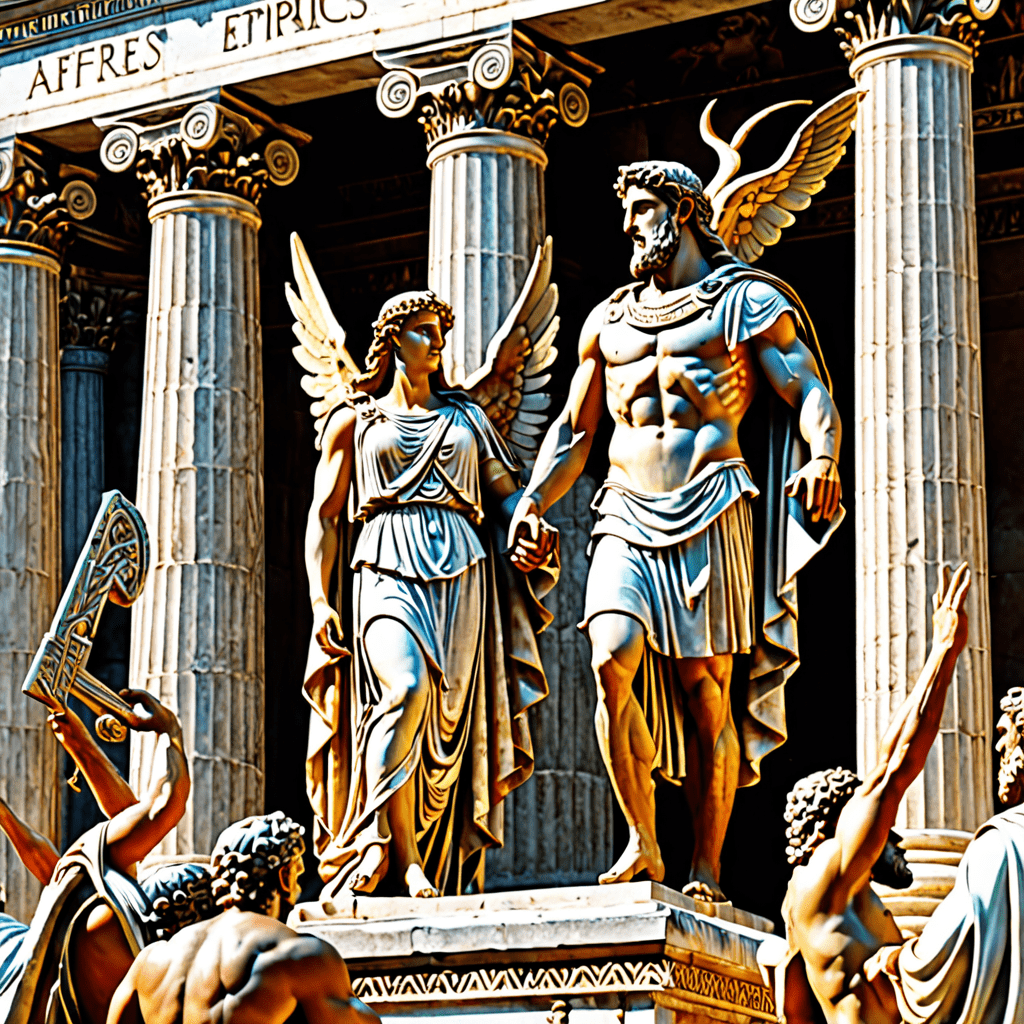The Floods of the Nile: Myths of Life and Death in Ancient Egypt
I. Introduction
The Nile River has long been regarded as the lifeblood of Ancient Egypt, offering sustenance and nourishment to its inhabitants. Its annual flooding was a phenomenon that shaped the agricultural landscape and cultural identity of the civilization. However, the Nile also represented a duality, serving as both a source of life and a harbinger of death. The purpose of this article is to explore the myths that surrounded the floods of the Nile, examining how these narratives reflected the complexities of existence in Ancient Egypt.
II. The Annual Flooding of the Nile: A Natural Phenomenon
The flooding of the Nile is an annual event that typically occurs between June and September. This cycle is primarily driven by seasonal rains in the Ethiopian highlands, which cause the river to swell and overflow its banks. The resultant inundation deposits nutrient-rich silt on the surrounding land, creating fertile soil ideal for agriculture.
Historically, this cycle had a profound impact on Egyptian society. The success of agriculture depended heavily on the timing and magnitude of the floods. Farmers relied on the floods to irrigate their fields, and the abundance of crops directly influenced the economy and sustenance of the population.
The floods also played a crucial role in the Egyptian calendar. The year was divided into three seasons: Inundation (Akhet), Emergence (Peret), and Harvest (Shemu). Each season was marked by specific agricultural activities, rituals, and festivals that aligned with the natural rhythms of the Nile.
III. Deities of the Nile: Personifications of Life and Death
Ancient Egyptians personified the Nile through various deities, each representing different aspects of life and death. Among them, Hapi, the god of the Nile, was revered as a symbol of fertility and abundance. He was depicted as a large man with a potbelly, often adorned with vegetation and water symbols, representing the life-giving properties of the Nile.
In contrast, Osiris, the god of the afterlife, also held significant ties to the Nile. His mythos included themes of death and resurrection, echoing the cyclical nature of the flooding. The interplay between Hapi and Osiris illustrated the delicate balance between life and death that characterized the Egyptian worldview, emphasizing how the floods could nourish life while also embodying the inevitability of death.
IV. Myths Explaining the Nile’s Floods
The myths surrounding the Nile’s floods were integral to the understanding of the natural world for the Ancient Egyptians. Creation myths often involved the Nile as a primordial force, with stories explaining how the river emerged from the chaos of the universe. One popular myth described how the Nile was birthed from the tears of the goddess Hathor, symbolizing the connection between love, loss, and the cycle of life.
The story of Osiris also played a crucial role in explaining the floods. Osiris’s death and resurrection were paralleled with the yearly floods, symbolizing the idea of rebirth and renewal. The flooding of the Nile was seen as a manifestation of Osiris’s tears, celebrating the return of life and fertility to the land after the death of winter.
These myths shaped cultural attitudes toward the floods, instilling a sense of reverence and fear. They underscored the belief that the natural world was imbued with divine significance, influencing how the Egyptians approached agricultural practices and religious ceremonies.
V. Rituals and Practices Linked to the Floods
To ensure a bountiful harvest, the Ancient Egyptians engaged in various agricultural rituals. These included:
- Prayers and offerings to Hapi for a successful inundation.
- Festivals celebrating the arrival of the floods, such as the Wepet-Renpet festival, marking the New Year.
- Rituals to appease the gods in times of drought or excessive flooding.
Additionally, religious ceremonies honoring both Hapi and Osiris were commonplace. These ceremonies reinforced the connection between divine favor and the natural cycles of the Nile, fostering societal cohesion and identity. Ceremonial practices often involved music, dance, and offerings at temples, emphasizing community participation in the agricultural calendar.
VI. The Nile as a Symbol of Duality: Life vs. Death
The Nile’s duality is a recurring theme in Egyptian art, literature, and religious texts. Artistic representations often depicted the river as a source of life, surrounded by lush greenery and abundant wildlife. Conversely, the darker aspects of the Nile, such as its potential for destruction during periods of excessive flooding, were also represented, showcasing the river’s unpredictable nature.
Literature, including hymns and poetry, reflects this duality, with references to the Nile as both a nurturing force and a destructive power. This complex relationship influenced the psychological and spiritual outlook of the Ancient Egyptians, encouraging a worldview that embraced both the joys of life and the inevitability of death.
VII. The Floods and Their Impact on Society and Economy
The floods of the Nile significantly shaped the economy of Ancient Egypt. The fertile lands resulting from the inundation supported agriculture, which was the backbone of the economy. Surplus crops facilitated trade, enabling the exchange of goods with neighboring regions.
Socially, the floods influenced migration and settlement patterns. Communities often formed around the banks of the Nile, where access to water and fertile land was most abundant. This concentration of population contributed to the development of a complex society with advanced governance structures.
The relationship between flood cycles and political power is also noteworthy. Pharaohs claimed divine right to rule, often linking their authority to the successful management of the Nile’s waters. The ability to predict and respond to the floods was seen as a measure of a ruler’s capability, reinforcing the connection between water management and political stability.
VIII. The Legacy of Nile Flood Myths in Modern Culture
Even today, the myths surrounding the Nile continue to resonate in contemporary literature and media. The river is often depicted as a symbol of renewal, drawing parallels to its ancient significance. In modern Egyptian identity, the Nile remains a source of national pride and cultural heritage, attracting tourism and interest from around the world.
However, environmental concerns regarding the Nile’s future pose challenges. Climate change, dam construction, and pollution threaten the delicate balance that the Ancient Egyptians revered. These modern issues echo the ancient narratives, highlighting the ongoing relevance of the Nile in discussions about life, death, and sustainability.
IX. Comparative Analysis: Flood Myths in Other Cultures
Similarities can be drawn between the flood myths of Ancient Egypt and those of other cultures. Many civilizations, such as the Mesopotamians and the Greeks, also held flood narratives that emphasized themes of creation, destruction, and rebirth. For instance, the Mesopotamian Epic of Gilgamesh features a great flood sent by the gods, paralleling the Egyptian belief in divine forces influencing the natural world.
These comparative analyses reveal a universal human tendency to seek understanding through myth, using stories to explain the mysteries of nature and existence. The floods of the Nile serve as a poignant reminder of this shared narrative tradition, encapsulating the complexities of life and death across cultures.



